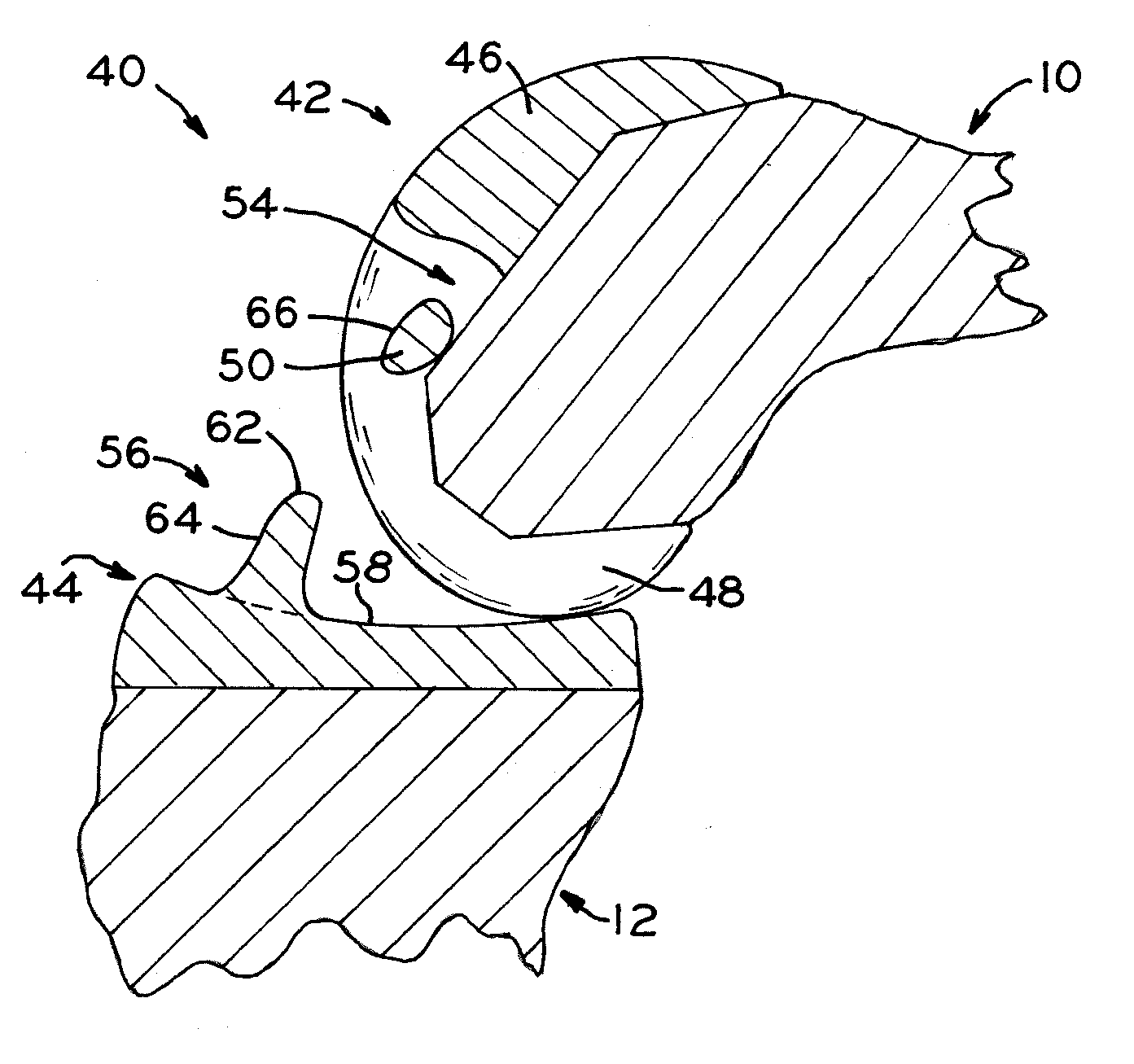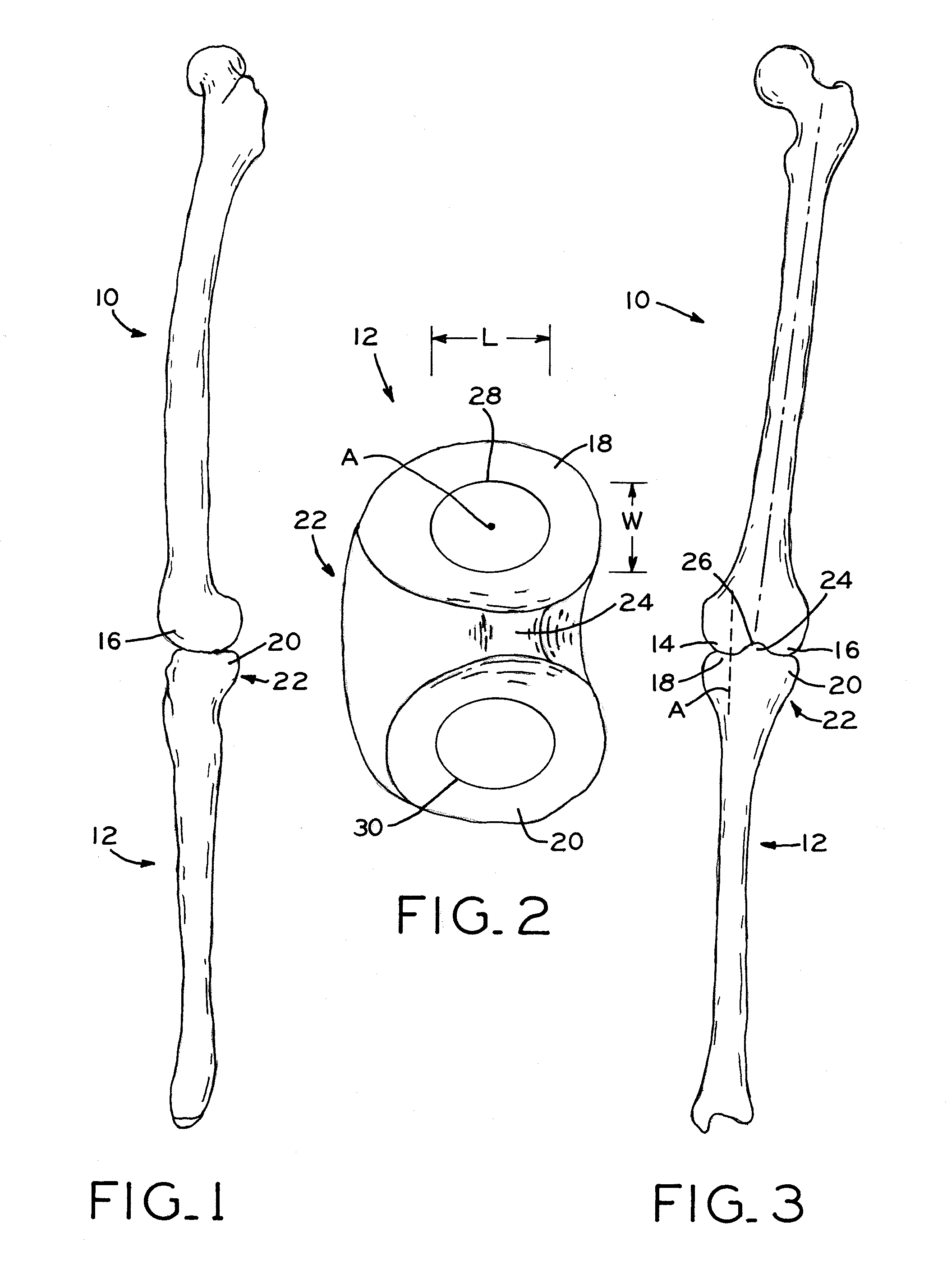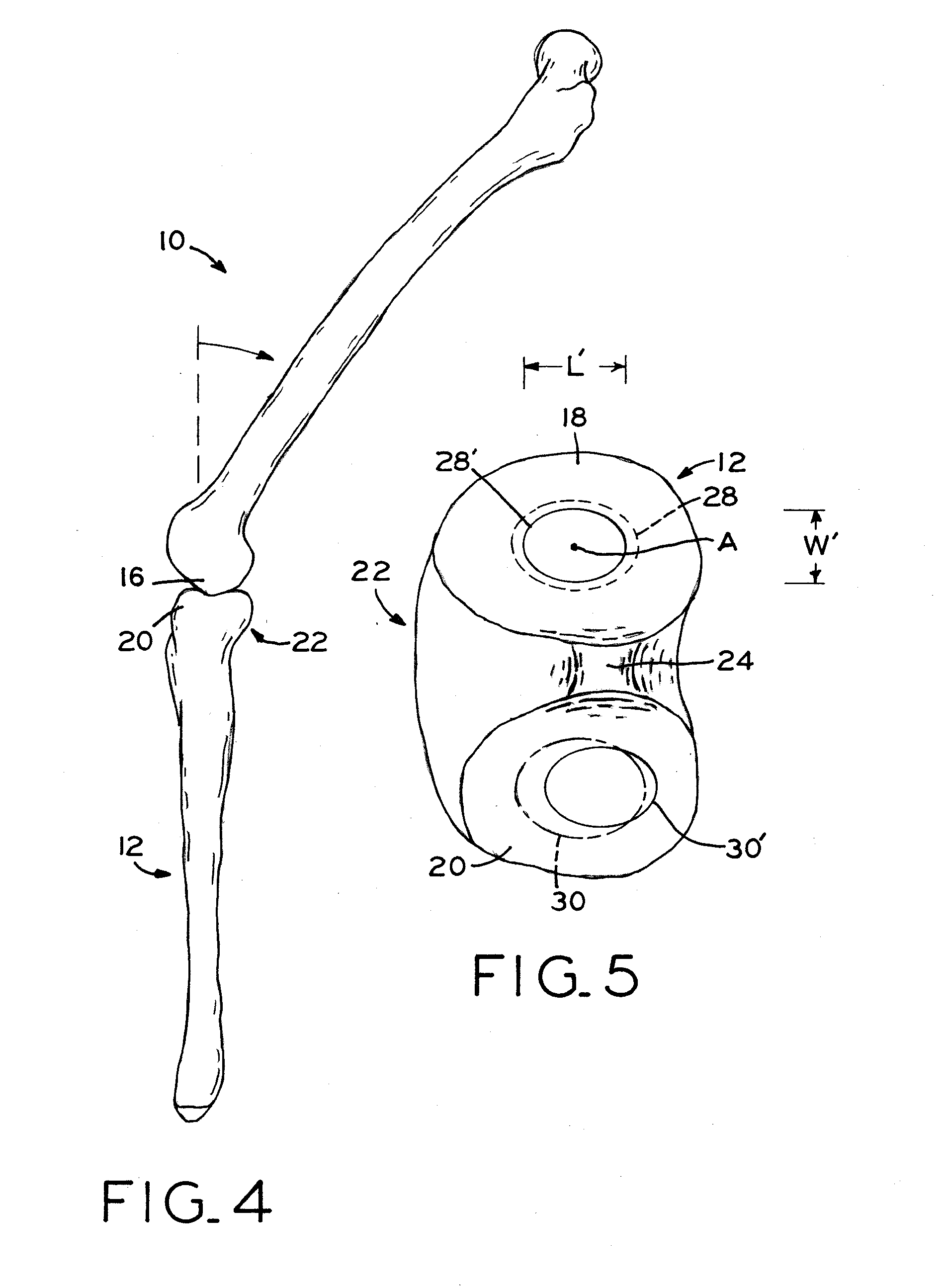Anterior cruciate ligament substituting knee implants
a technology of anterior cruciate ligament and knee joint, which is applied in the field of prosthetic implants, can solve the problems of difficult to recreate the stability and complex movements of the natural knee joint, and achieve the effect of reducing the difficulty of re-injection and re-injection
- Summary
- Abstract
- Description
- Claims
- Application Information
AI Technical Summary
Benefits of technology
Problems solved by technology
Method used
Image
Examples
Embodiment Construction
[0075]As discussed above with respect to FIGS. 1-7, the natural knee joint is supported by various ligaments, including the posterior cruciate ligament (PCL) and the anterior cruciate ligament (ACL). These ligaments work in concert with the meniscus and the geometry of the femur and tibia to effect rotation of femur 10 about a medially offset axis A relative to tibia 12. Also, the ACL, in particular, resists anterior translation of tibia 12 relative to the femur 10.
[0076]In certain cases, the ACL must be sacrificed. The knee joint prostheses of the present disclosure function to replicate at least one of the beneficial aspects of the ACL. When the knee joint is located in full extension or somewhere between full extension and early flexion (also referred to herein as “substantially extended positions”), the knee joint prostheses of the present disclosure may be arranged in a first configuration that is more restricted to movement. For example, the knee joint prostheses of the presen...
PUM
 Login to View More
Login to View More Abstract
Description
Claims
Application Information
 Login to View More
Login to View More - R&D
- Intellectual Property
- Life Sciences
- Materials
- Tech Scout
- Unparalleled Data Quality
- Higher Quality Content
- 60% Fewer Hallucinations
Browse by: Latest US Patents, China's latest patents, Technical Efficacy Thesaurus, Application Domain, Technology Topic, Popular Technical Reports.
© 2025 PatSnap. All rights reserved.Legal|Privacy policy|Modern Slavery Act Transparency Statement|Sitemap|About US| Contact US: help@patsnap.com



